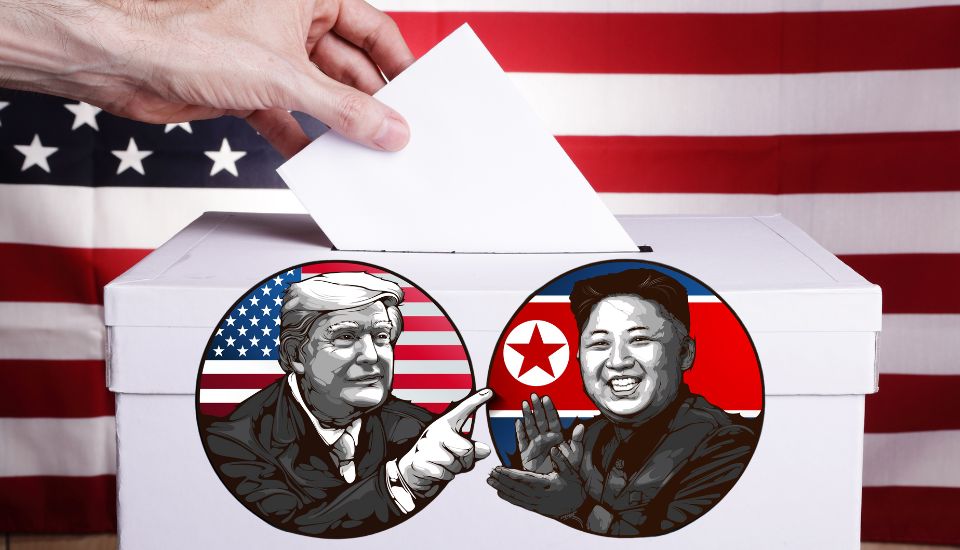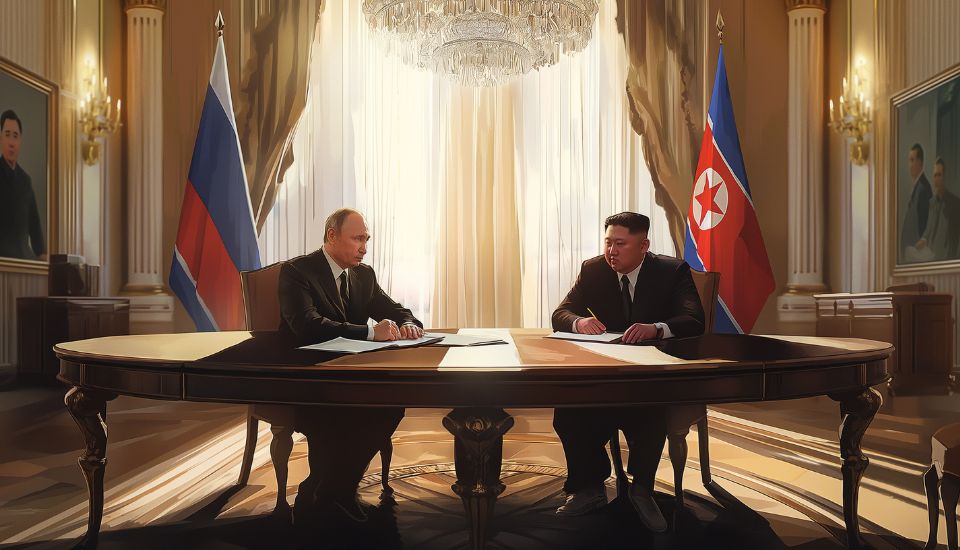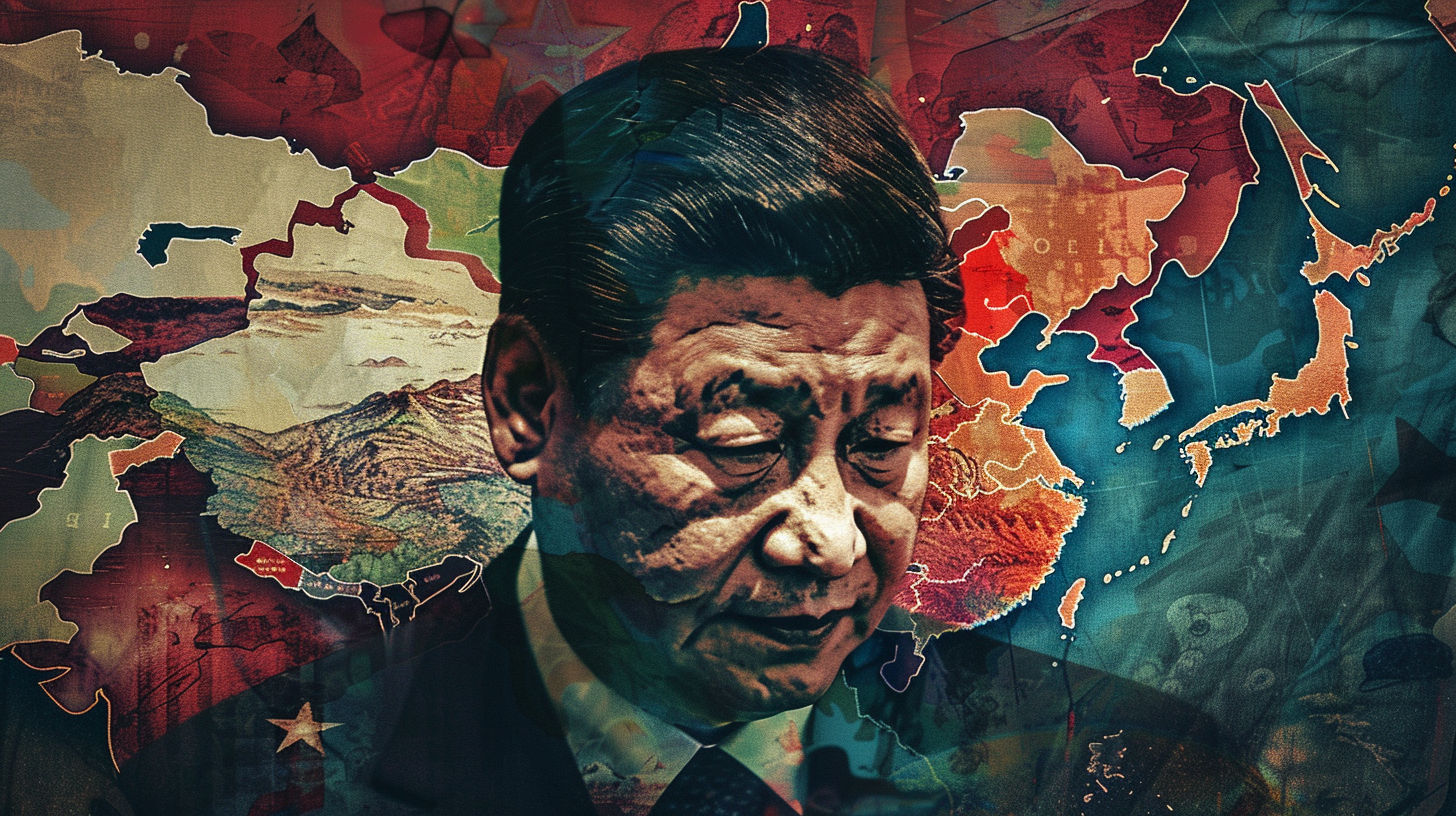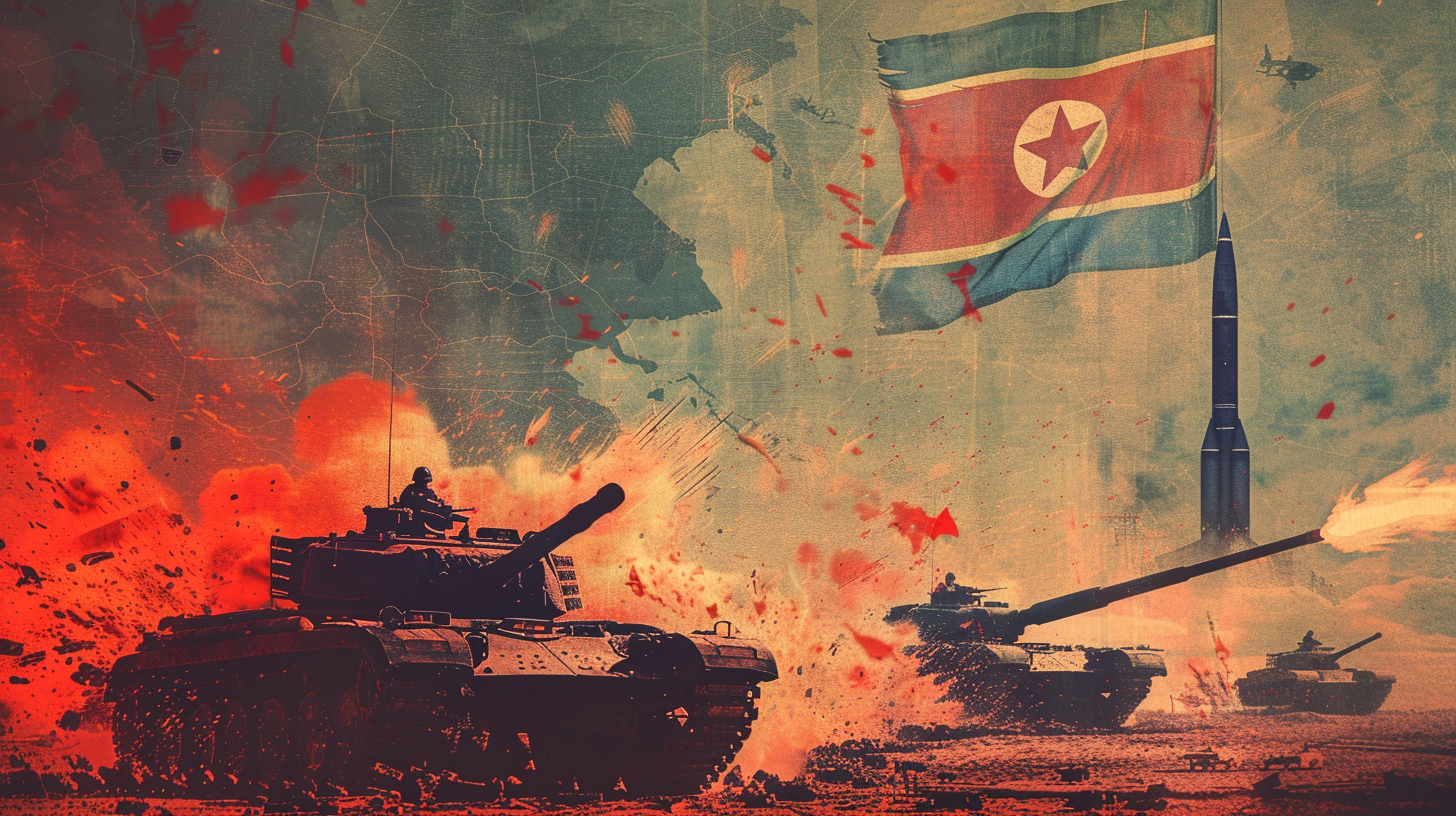
Waiting for Trump: North Korea's Interim Cold War 2.0 Strategy
Commentary | June 11, 2024
Leif-Eric EASLEY
Professor, Ewha Womans University
Leif-Eric Easley, Professor at Ewha Womans University, argues that the Kim regime is maintaining power and control by leveraging its relationships with China and Russia while demonizing South Korea. However, this is an interim strategy before the U.S. presidential election in November 2024 because the DPRK-Russia-China "axis of transactionalism" is insufficient for North Korea's long-term economic development. Next year, the Kim regime may expand its diplomacy beyond Moscow and Beijing. Meanwhile, Seoul, Washington, and Tokyo are strengthening trilateral cooperation to increase the costs of Pyongyang's violations of international norms while keeping diplomatic channels open for future engagement.
|
Available Downloads |
As North Korea (DPRK) has emerged in stages from its self-imposed COVID isolation, external actors interested in reengaging with Pyongyang have attempted to decipher the Kim Jong Un regime’s post-pandemic foreign policy strategy. The DPRK has continued with aggressive political rhetoric, provocative military maneuvers, and violations of United Nations (UN) Security Council resolutions (Easley 2017). It has gradually reopened to China (PRC), its longtime primary trade partner and backer of last resort. Novel in the current situation is Pyongyang profiting from Russia’s aggression in Ukraine due to Vladimir Putin’s desperate need for ammunition. In exchange for artillery shells and missiles, North Korea is likely receiving food, fuel, technology, and other military assistance from Moscow, in addition to diplomatic cover at the UN. This allows the Kim regime to hedge its heavy reliance on China and delay a broader international reopening, while obtaining the minimum resources necessary for maintaining power. However, present international exchanges are insufficient for meeting the economic and foreign policy goals of the regime (Fish 2023). So what is Kim waiting for?
It is likely that North Korea is waiting out the November 2024 U.S. presidential election before engaging in any new diplomatic initiatives with South Korea (ROK), Japan, the United States or European countries. If Donald Trump returns to the White House, there may be new diplomatic angles to exploit. Until then, the Kim regime is focused on increasing domestic control by stamping out ‘foreign pollution’ and developing military capabilities with an aggressive weapons testing schedule. However, this ‘Cold War 2.0’ strategy is not economically sustainable, so Pyongyang can be expected to eventually move beyond the current ‘axis of transactionalism’ with China and Russia.
Kim’s Campaign against ‘Foreign Pollution’
As the DPRK styles itself as the true Korea and claims the entirety of the Korean Peninsula, information about the economic success and international recognition of the ROK represents an existential threat to the Kim regime. South Korea’s sustained economic development has seen it grow to achieve the world’s 13th largest gross domestic product (GDP) in 2022 (World Bank 2024), with an economy over 50 times larger than that of the DPRK. The ROK is an increasingly important diplomatic partner for 187 states across the world while North Korea has closed many embassies, likely due to revenue problems, leaving it with only 43 overseas missions (Lowy 2024). Even North Korea’s long-time international partner, Cuba, established diplomatic relations with Seoul, a move that appeared to surprise Pyongyang. While North Korea is widely considered an international pariah for its nuclear missile development, human rights abuses, and violations of international law, Seoul has become a cultural powerhouse. With ‘K-content’ a major export industry, South Korea ranks an impressive 12th in the world according to a 2022 ranking of soft power (Kwak 2023).
In contrast, the Kim regime has undertaken considerable efforts to eradicate ‘foreign pollution’ and outside influence. North Korea’s COVID-19 pandemic self-isolation entailed the most draconian border controls in the world that also lasted longer than travel restrictions in other countries. During this period, North Korean authorities strictly punished violations of anti-epidemic regulations and tightened state control over markets and the informal economy (Lee, et al. 2023). Part of the crackdown on smuggling by non-state actors was to curtail access to foreign cultural content. Pyongyang also pursued various ideological campaigns and enacted the “Law on Rejecting Reactionary Ideology and Culture” in 2020, which explicitly specifies the death penalty as a possible consequence of accessing foreign content (Lee 2023).
At the same time, the Kim regime has intensified its demonization of South Korea (Ha and Kim 2024). Pyongyang announced in December 2023 that it no longer considers Seoul a counterpart for reconciliation and peaceful unification (Ministry of Unification 2024). In January 2024, Kim called for constitutional amendments to define South Korea as the number one hostile country (Kim 2024). Harkening back to Cold War tensions on the Korean Peninsula, Pyongyang ordered hundreds of trash-filled balloons be scattered across the south, allegedly in retaliation for balloons with anti-Kim leaflets sometimes sent north by defectors and human rights non-governmental organizations (NGOs) (Kelly 2024). North Korea also implied that it might attack South Korean vessels in disputed waters as well as surveillance assets near the inter-Korean border. The current calculus of the Kim regime is that stamping out ‘foreign pollution’ and demonizing South Korea is more useful for staying in power than seeking economic gains from inter-Korean engagement.
Pyongyang Profiting from ‘Cold War 2.0’ Dynamics
During North Korea’s phased reopening after the COVID-19 pandemic, Pyongyang’s geopolitical and economic focus has been on Russia and China, taking advantage of Washington’s strained relations with Moscow and escalating strategic competition with Beijing. Russia’s invasion of Ukraine, in blatant violation of the United Nations Charter, led to its pariah status in the West, eliciting economic sanctions and coordinated diplomatic pressure, as well as military and humanitarian assistance to Kyiv. To profit from this, Pyongyang has offered itself up as an arsenal of autocracy (Chun 2024). By selling massive amounts of arms for Putin’s illegal war in Ukraine, the Kim regime receives more than food, fuel, and military technology. Moscow supported Pyongyang at the UN by vetoing the renewal of the mandate for the panel of experts on DPRK sanctions enforcement that had been documenting sanctions evasion, including North Korea’s weapons exports to Russia. Pyongyang also gains the opportunity to see how its missiles perform in wartime, including against U.S. and ally missile defense systems. North Korea not only seeks short-term financial and technological gains from military exports, it likely also hopes to revitalize its defense industrial base for the long-term benefit of its own capabilities and a larger share of global arms sales.
North Korea’s recently boosted cooperation with Russia, which includes exchange visits by economic officials and even token tourism, is also part political theater regarding the objective of reducing reliance on China (Chow and Easley 2019). Russia cannot replace China economically, but North Korean nationalism rejects dependence on Beijing and demands not only autonomy but also strategic leverage. More than simply being a buffer state or having the Kim regime tolerated by China to avoid instability in the region, Pyongyang prefers a geopolitical situation where Beijing will not abandon or turn against it. The Kim regime is effectively exploiting U.S.-China tensions over Taiwan, the South China Sea, human rights in Hong Kong, Tibet and Xinjiang, trade issues, and high-tech competition. Under such geopolitical conditions, China is extremely unlikely to cooperate with the United States at the UN Security Council or elsewhere to diplomatically or economically pressure North Korea to denuclearize. Pyongyang may appear to be aligning with Xi Jinping’s vision of global governance, but it is actually using a ‘Cold War 2.0’ dynamic to get away with its continued violation of UN Security Council resolutions.
DPRK-Russia-China ‘Axis of Transactionalism’
To understand why North Korea’s current international approach is an interim strategy, it is important to observe how DPRK-Russia-China cooperation represents more of an ‘axis of transactionalism’ rather than a trilateral alliance. The three governments often stand against the United States but do so for different reasons. They may be led by authoritarian strongmen, but their domestic systems of governance are very different. Russia’s strategic interests are in a faceoff with NATO, particularly over Putin’s ongoing invasion of Ukraine. China’s strategic interests are to make other countries more dependent on the world’s top trade power, gradually push the U.S. out of Asia, and eventually unify Taiwan with the PRC (Easley and Chow 2024). The Kim regime’s strategic interests are to stay in power, survive what it considers an arms race with South Korea, split the U.S.-ROK alliance, and eventually conquer Seoul militarily and politically, however many generations of struggle it takes.
With incongruent interests and values, and fewer institutional ties in common than democracies, Russia, China, and North Korea do not trust each other. They do not have trilateral security arrangements or defense exercises comparable to the U.S., South Korea, and Japan, nor do they share diffuse reciprocity and economic security cooperation anchored in the rules-based international order (Easley 2023). Instead, Russia, China, and North Korea’s cooperation is highly transactional, with each side using the other as is convenient and expedient. Pyongyang seeks coercive capacity to maintain autonomy and the Kim regime’s intergenerational plans. It plays neighbors off each other and has doubled down on weapons development, not only for deterrence, but also for domestic political legitimacy. Yet, broader economic development is also necessary to close gaps with South Korea, which will be increasingly challenging without some reform and opening. Therefore, the ‘axis of transactionalism’ is insufficient for North Korea’s long-term strategy.
Conclusion: That Which is Unsustainable…
The Kim regime will likely reassess its foreign policy strategy at the end of December 2024 and announce updates in its priorities in January 2025, after the U.S. election reveals whether Trump or Joe Biden will have a second term. It would be unrealistic to expect expressions of willingness for denuclearization, and there almost certainly will be North Korean statements about military strength and self-reliance (juche). But there might also be signs of an expanding diplomatic strategy beyond Russia and China. Until then, South Korea, Japan, and the United States will look to maintain their tight coordination from the Camp David Summit, without serious disruptions from domestic politics. Their goal is to deter the worst North Korean behavior, such as a kinetic attack along the Korean Demilitarized Zone and Northern Limit Line, and most of all, use of nuclear weapons. Trilateral cooperation may not be able to stop North Korea’s military modernization, missile tests, or cybercrimes, but it is working to increase the costs of Pyongyang’s violations of UN Security Council resolutions, while leaving the door open for future engagement.
References
Chow, Jonathan T. and Leif-Eric Easley. 2019. “Renegotiating Pariah State Partnerships: Why Myanmar and North Korea Respond Differently to Chinese Influence.” Contemporary Security Policy, 40(4): 502-525. https://doi.org/10.1080/13523260.2019.1660483
Chun, Chaesung. 2024. “Strategic Crossroads: ROK’s Response to DPRK’s Diplomatic Moves in the Emerging New Cold War Era.” Global NK. April 15. https://www.globalnk.org/commentary/view?cd=COM000135
Easley, Leif-Eric. 2017. “North Korean Identity as a Challenge to East Asia’s Regional Order.” Korean Social Science Journal, 44(1): 51-71. http://www.kossrec.org/wp-content/uploads/2017/09/4.-Leif-Eric-Easley.pdf
______. 2023. “Stabilizing Japan-Korea Relations: Restraining Nationalism, Appraising Beijing, Reassuring Washington.” Pacific Review, 36(6): 1273-1305. https://www.tandfonline.com/doi/full/10.1080/09512748.2022.2090594
doi/10.1080/09512748.2022.2090594
Easley, Leif-Eric and Jonathan T. Chow. 2024. “Enabling Pariahs: China’s Support of Myanmar, North Korea, and Russia for Geopolitical Advantage.” Asian Survey, 64(3): 396-427. https://doi.org/10.1525/as.2024.2113239
Fish, Amanda. 2023. “China’s Role in Ensuring Human Security in North Korea.” Asian International Studies Review, 14(1): 228-252.
Ha, Young-sun and Yang Gyu Kim. 2024. “Deciphering North Korea’s Policy Shift: Annihilation of ROK vs. End of Kim Regime.” Global NK. March 11. https://www.globalnk.org/commentary/view?cd=COM000133
Kelly, Robert E. 2024. “Trash Balloons Another Sign of North Korea’s Refusal to Act within Global Norms.” CNA. June 4. https://www.channelnewsasia.com/commentary/north-korea-trash-balloons-south-activist-propaganda-diplomacy-4382726#:~:text=BUSAN%2C%20South%20Korea%3A%20North%20Korea,trash%2C%20dirt%20and%20even%20manure.
Kim, Soo-yeon. 2024. “N.K. leader calls for defining S. Korea as ‘No. 1 hostile country’ in constitution.” Yonhap. January 16. https://en.yna.co.kr/view/AEN20240116000651315#:~:text=SEOUL%2C%20Jan.,war%2C%20state%20media%20reported%20Tuesday.
Kwak, Yeon-soo. 2024. “Global Rise of Korean Soft Power.” Korea Times. January 3. https://www.koreatimes.co.kr /www/art/2024/05/398_342391.html
Lee, Sang-yong. 2023. “North Korea’s War Against Outside Information and Culture.” 38 North. May 25. https://www.38north.org/2023/05/north-koreas-war-against-outside-information-and-culture/
Lee, Wootae, et al. 2023. “White Paper on Human Rights in North Korea.” Korea Institute for National Unification. May 4. https://www.kinu.or.kr/eng/module/report/view.do?idx=114277&nav_code=eng1674806000
Lowy Institute. 2024. Global Diplomacy Index. https://globaldiplomacyindex.lowyinstitute.org/
Ministry of Unification. 2024. “Important Events from 2009 to Present.” February 16. https://unikorea.go.kr/eng_unikorea/relations/ 2009Present/boardId=bbs_0000000000000140& mode=view&cntId=172&category=&pageIdx=
World Bank. 2024. “The World Bank in the Republic of Korea.” April. https://www.worldbank.org/en/country/korea /overview#:~:text=The%20Republic%20of%20 Korea%20has,annually%20between%201980% 20and%202023
■ Leif-Eric EASLEY (Ph.D. in Government, Harvard University) is a professor at Ewha Womans University in Seoul where he teaches international security and political economics. He appreciates excellent research assistance from Sunwoo Kim.
■ Typeset by: Jisoo Park, Research Associate
For inquiries: 02 2277 1683 (ext. 208) | jspark@eai.or.kr
Security and External Relations

Russia-DPRK Ties after 75th Anniversary of Diplomatic Relations: Hurdles and Opportunities
Seho JANG | 05.June.2024

The Weakest Link: Navigating Beijing's Dilemmas in the China-DPRK-Russia Partnership
Dong Ryul LEE | 31.May.2024

Is the Second Korean War Imminent?
Jihwan HWANG | 29.May.2024
LIST